What Are Cataracts in Dogs Eyes?
Just like a human eye, a dog’s eye is made up of cones, rods, lenses, corneas, and pupils. Although a dog does not see things the same as a human, it can be affected by a range of conditions that also affect human eyes. As such, cataracts in dogs can be a concern.
Cataracts occur as a dog ages and will show as a clouding of the lens that prevents light from entering the eye. The eye of the dog contains proteins and water. When the protein starts to clump together, it creates a cloudy substance that covers the lens.
Sometimes a cataract will start off relatively small. However, as the proteins build up, the entire lens can become completely clouded. In other cases, a cataract may appear overnight. Cataracts do not cause any discomfort for the animal and can sometimes be treated with surgery.
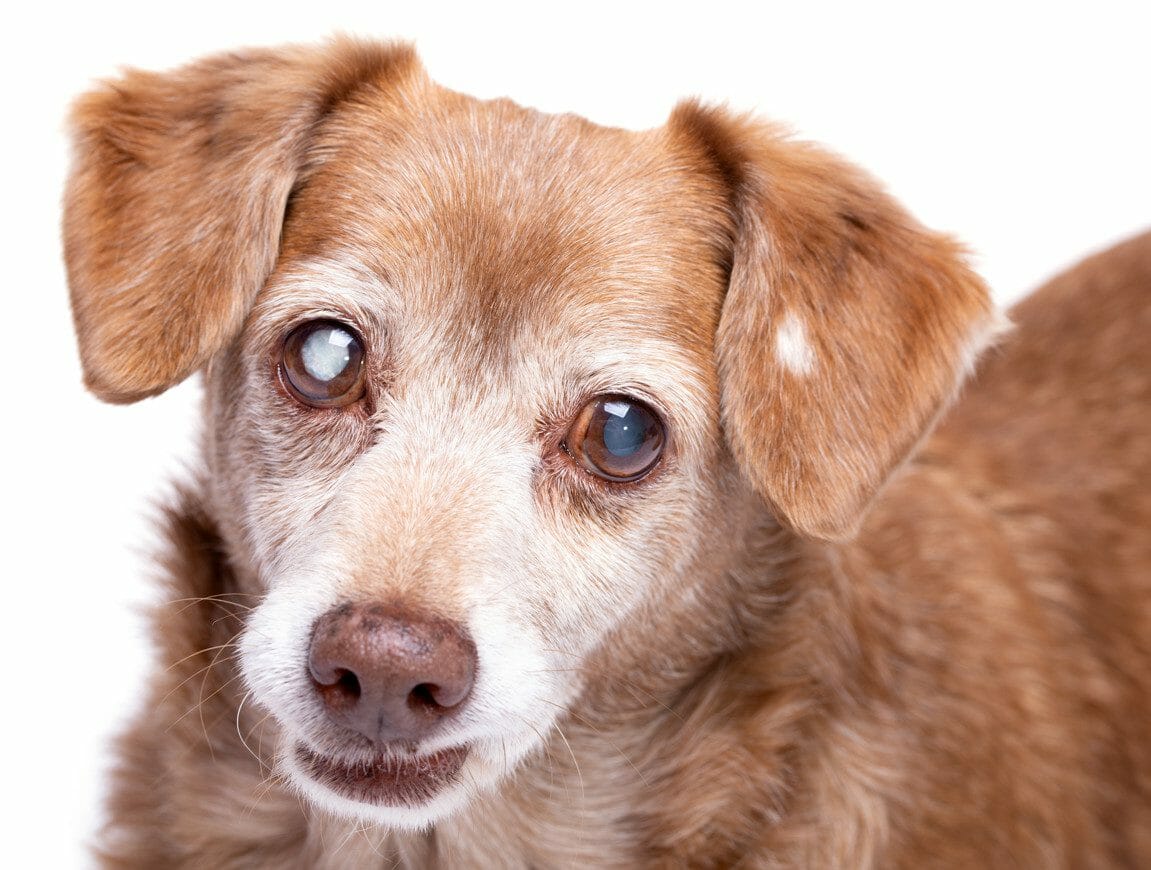
What Causes Cataracts in Dogs?
There are several causes of cataracts in dogs. For many dogs, the condition is hereditary. Certain breeds are genetically predisposed to develop cataracts, as seen below.
- Afghan Hounds
- American Staffordshire Terrier
- Australian Shepherd
- Bichon Frise
- Boston Terrier
- Cocker Spaniel
- English Springer Spaniel
- French Bulldog
- German Shepherd
- Golden Retriever
- Havanese
- Labrador Retriever
- Miniature Schnauzer
- Old English Sheepdog
- Poodle
- Siberian Husky
- Silky Terrier
- Welsh Springer Spaniel
- West Highland Terrier
Owners of these breeds should be aware of the symptoms of cataracts and should visit a veterinarian if a change is detected in the dog’s eye.
Hereditary cataracts may be developmental, congenital, or senile. Developmental cataracts will often start to appear within the first year of a dog’s life. If a dog has congenital cataracts, it will be born with the condition. This type of cataract could be caused by exposure to toxins while in utero.
Late onset, or senile cataracts, affect dogs over the age of six. These cataracts do not evolve in a uniform manner. Often, one eye will progress faster than the other. Usually, the cataract will begin in the center and move out.
Injuries to the eye that cause inflammation can also lead to a dog developing cataracts. Another potential cause is diabetes mellitus. This condition affects the pancreas and causes issues with the organ’s ability to regulate blood sugar levels. When there is too much sugar present in the aqueous humor between the cornea and the lens, it can cause swelling.
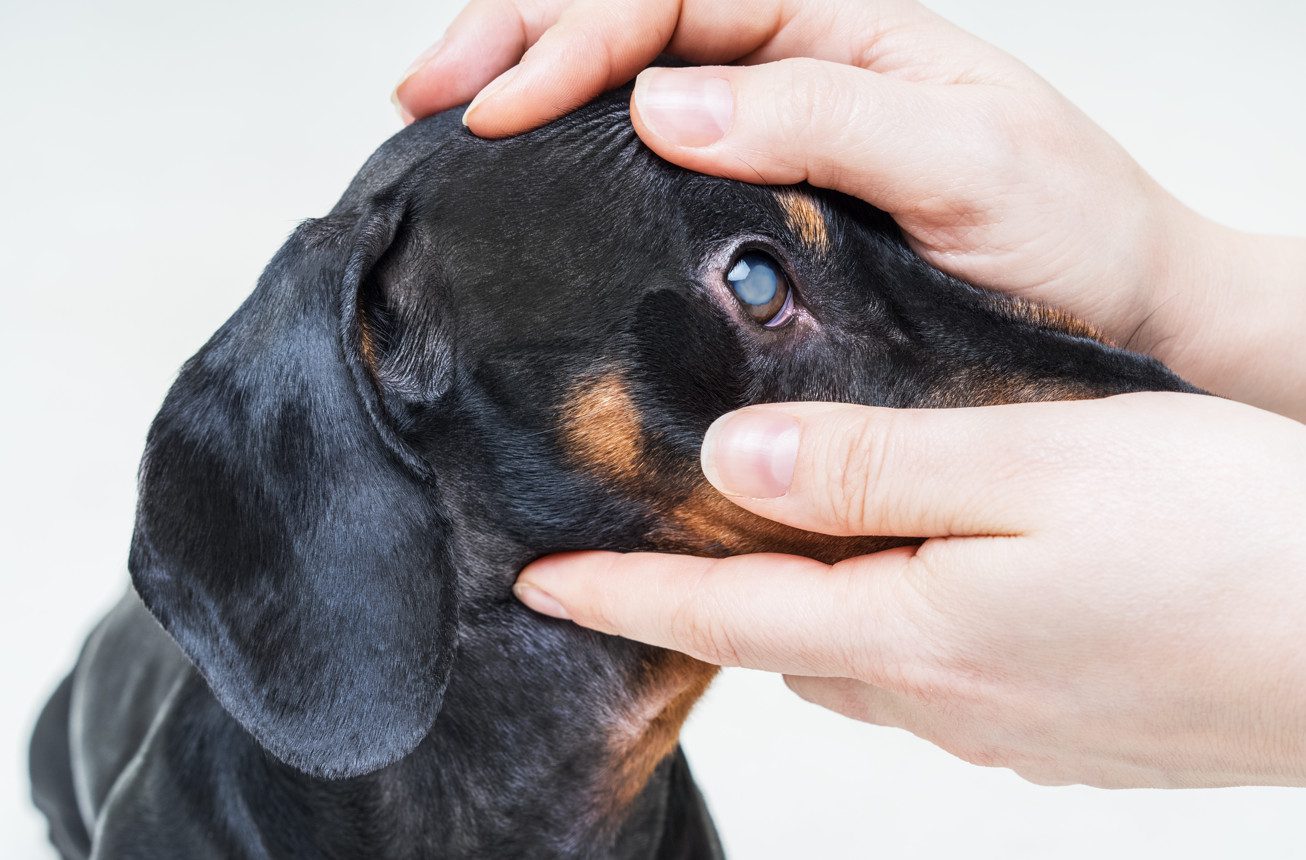
What Do Cataracts Look Like in Dogs?
When a dog has cataracts, the lens will become cloudy. Mature cataracts appear as white disks behind the iris. The area of the eye that would usually appear black will now be white.
Obtaining a professional diagnosis is essential as cataracts can easily be confused with a condition called nuclear sclerosis, which is when the lens of the eye becomes harder as the dog ages. Nuclear sclerosis will cause cloudiness in the dog’s eyes. However, it does not lead to blindness.
As a dog ages, the structure of the eye will change. If an older dog starts to develop a cloudy look in its eyes or has an underlying condition affecting the eyes, cataracts may form. Depending on the underlying cause, these cataracts may stay small or may grow. Cataracts that are caused by diabetes often expand quickly and cover the entirety of the lens.
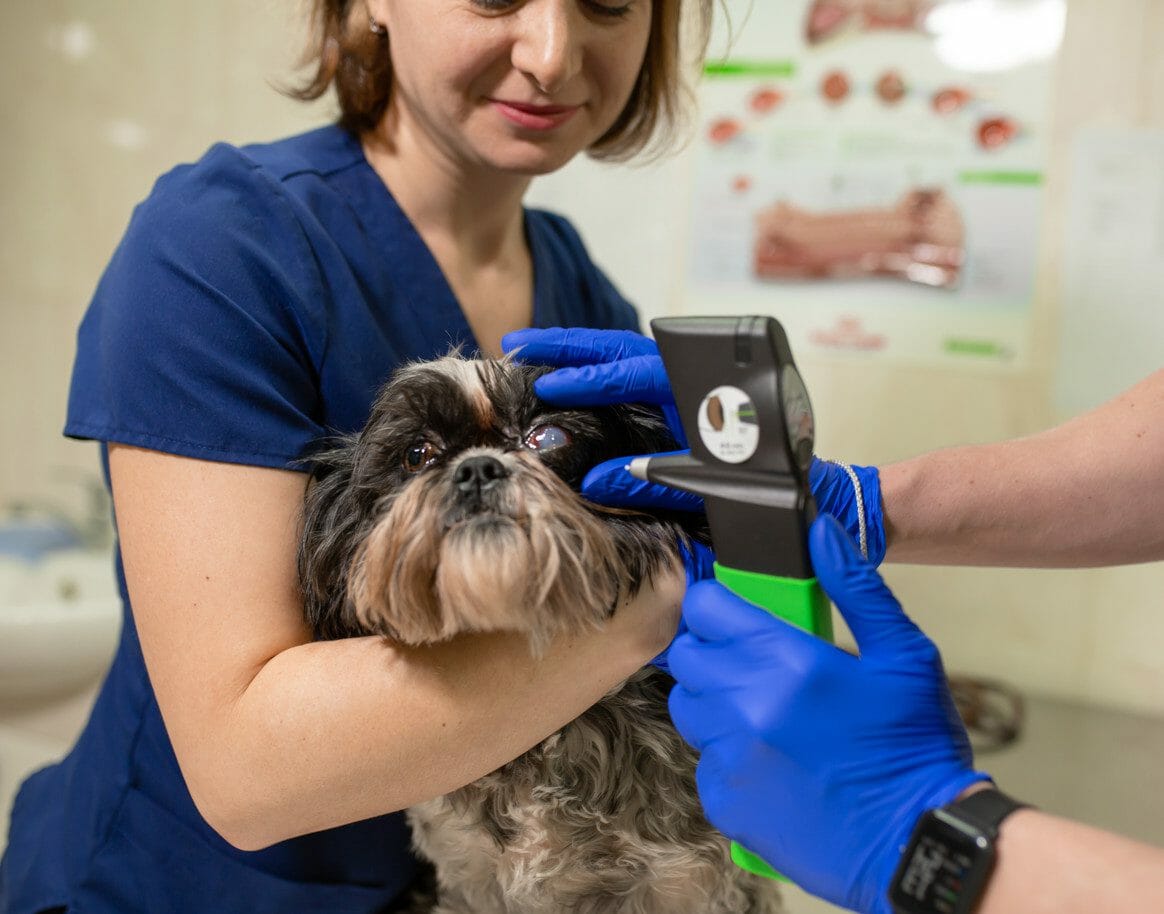
Do Cataracts in Dogs Lead To Blindness?
The factors that affect whether a cataract will progress or remain unchanged depend on the underlying cause and the breed the dog. Different types of cataracts in dogs are described below.
- Incipient. At this size, a veterinarian will need to use magnification to confirm a diagnosis. This type of cataract covers less than 15% of the surface of the lens and will cause no loss in eyesight.
- Immature. If 15% or more of the lens becomes clouded and the cataract affects the different layers of the lens, it is termed an immature cataract. With this diagnosis, visual impairment is mild, and the retina is still visible.
- Mature. When the veterinarian diagnoses a cataract that is mature, the retina will not be visible. If cataracts cover less than 30% of the surface of the lens or if only one eye is affected, there is no significant risk of a loss of vision. If cataracts cover 60% or more of the eye’s surface, eyesight will become impaired, and the dog will experience a significant loss of vision with the potential for blindness. When the level of coverage of cataracts reaches 100%, the dog will entirely lose its sight in the affected eye.
- Hypermature. Cataracts that progress to this stage cause the lens to shrink. The lens capsule will also appear to be wrinkled. During this stage, lens induced uveitis will occur. This is an inflammation inside the eye.
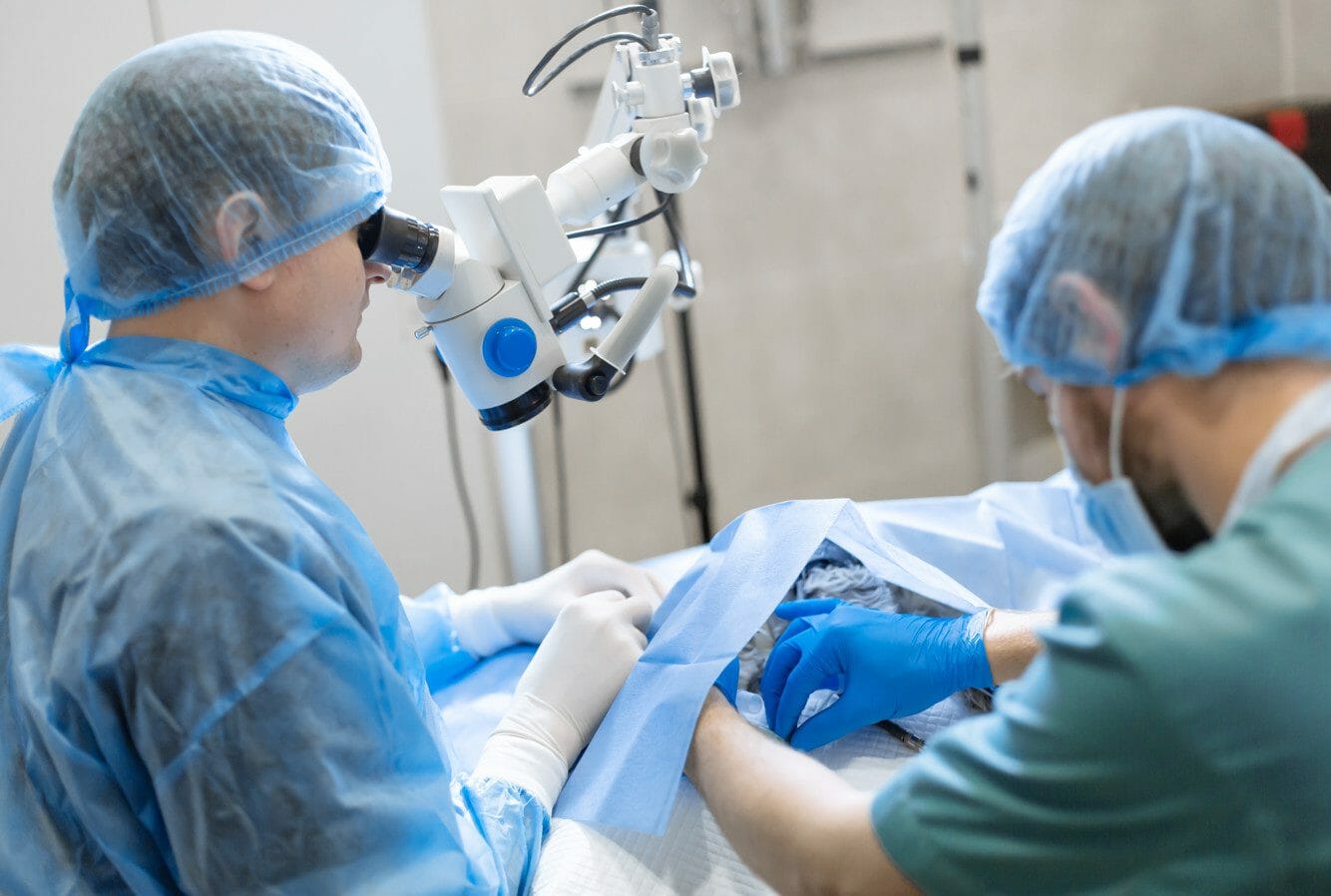
How to Treat Cataracts in Dogs
Once cataracts have been diagnosed by a veterinary ophthalmologist, the best course of action will be to have them surgically removed. Successful surgery can usually restore visual impairments. There are few complications associated with the procedure, and the dog will be able to return to its normal routine after a few days.
There are currently no topical medications that slow the progression of cataracts. However, aldose reductase inhibitors (ARIs) can help in cases where diabetes is the root cause. However, ARIs are expensive and must be administered to a strict schedule to be effective.
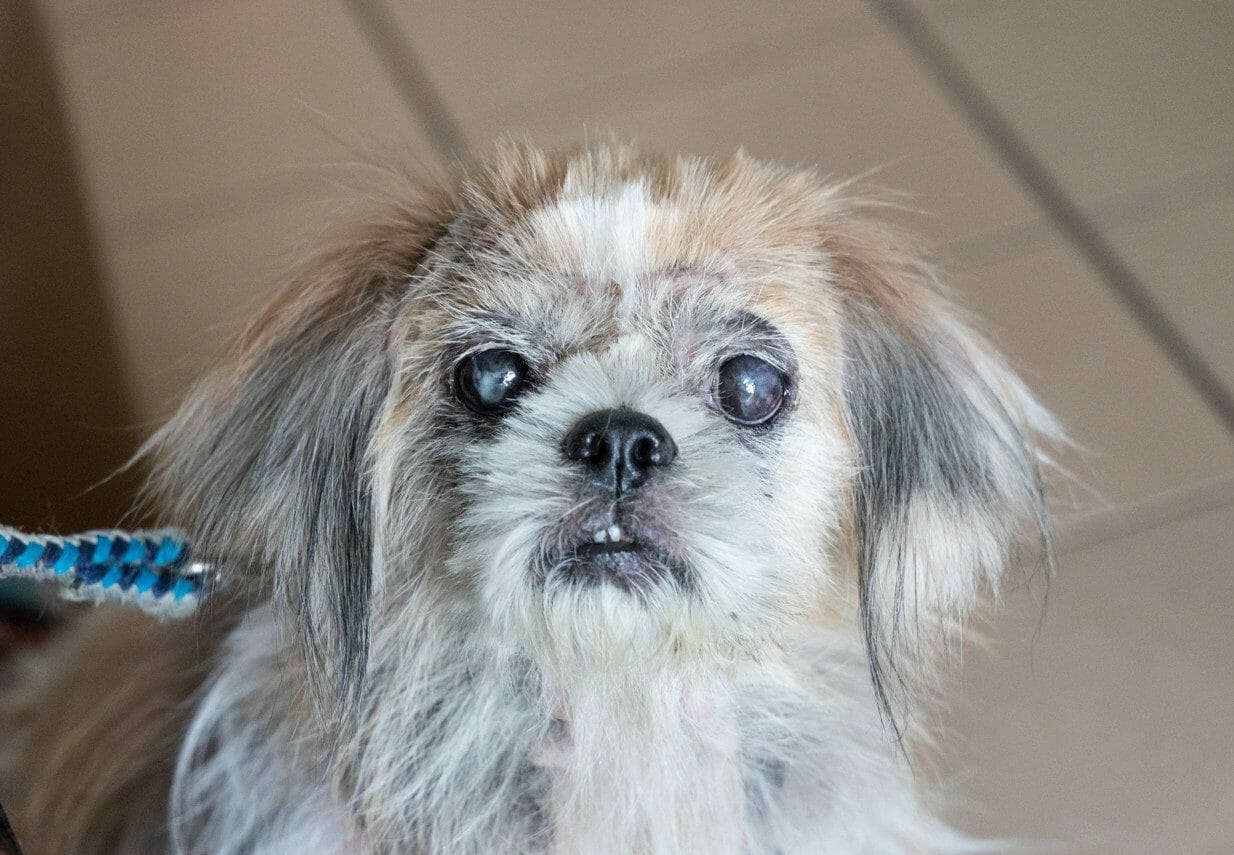
How to Prevent Cataracts in Dogs
Prevention of cataracts is not usually possible. However, dog owners can take several steps to ensure a dog retains its vision, particularly when diabetes is present.
- Regularly check a dog’s eyes for signs of cataracts.
- Arrange a veterinarian consultation if a dog’s eyes appear cloudy or blue gray.
- Consult a veterinarian if the dog appears to be struggling to see.
- Pay attention to any conditions (such as diabetes) that may cause cataracts.
- Ensure the dog receives a full veterinary checkup following any physical trauma.
Because cataracts are often hereditary, learning about the medical history of the dog’s parents can help.



